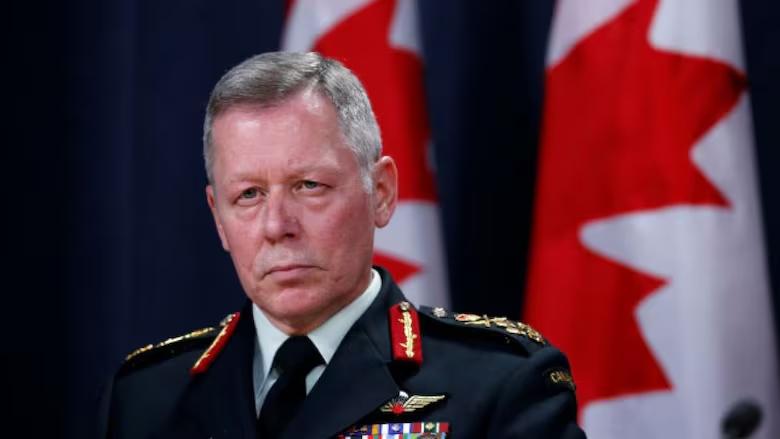'I am truly sorry': Vance apologizes to slain soldiers' families over closed-doors Afghan war monument
DND comes up with a plan to let families of fallen soldiers visit cenotaph at headquarters

The Department of National Defence says it has come up with a plan to allow families of fallen soldiers and veterans access to the Kandahar war memorial at the country's top military headquarters in the Ottawa area.
Chief of the Defence Staff Gen. Jonathan Vance issued a long, written apology on Friday and accepted full responsibility for the decision to exclude relatives of soldiers killed in Afghanistan from a closed-door dedication ceremony for the cenotaph.
The families and former soldiers expressed outrage earlier this week in interviews with CBC News, saying they felt betrayed because they were only notified after the fact about the May 13 ceremony, which was attended by senior brass and government officials.
There was no public notice of the event until the department posted photos and a statement on social media — four days later.
Vance, in his statement on Friday, said "the best of intentions have led to unintended harm" and that decision-makers "unintentionally" went down that path.
"We owe the family and friends of our fallen, all who served in Afghanistan, and Canadians an apology for not properly including you and not properly communicating with you," he said.
"I am truly sorry for our insensitivity and the pain, anger and frustration that this decision caused you."

Vance acknowledged the decisions made regarding the dedication ceremony "alienated and angered" the families and the wider public.
"To each and to all, we offer our deepest apologies, and ask for forgiveness."
The cenotaph stood outside of the Canadian headquarters at the Kandahar Airfield throughout the Afghan war. It started as only a few plaques hanging on a large rock, but as casualties grew, so did the monument.
By the end of Canadian combat operations, the monument ran to 191 plaques honouring Canadian soldiers and civilians, as well as American troops who served under Canadian command.
It became a gathering point for soldiers grieving lost comrades and families brought over to the war zone on military-escorted trips.
The monument was disassembled and brought back to Canada in 2011. But finding a permanent home for the memorial here proved to be difficult.
Vance said it needed to be protected both from the weather and the threat of vandalism — which is why it was put in its own building behind the security cordon at the new National Defence Headquarters in west Ottawa, where it will "serve as a daily reminder to us of the true, and ongoing, cost of war."
The memorial "will become accessible to all who come and wish to see it," Vance said, and all members of the military will be able to see it whenever they want by presenting their military identification cards for access.
A system of escorted visits for family members will be established, Vance said, adding several families have already expressed interest.
In addition, Vance said the department will provide a continuous schedule of opportunities for "all who wish to visit, and we encourage you to do so."
Whether that would include members of the general public is not clear at the moment.